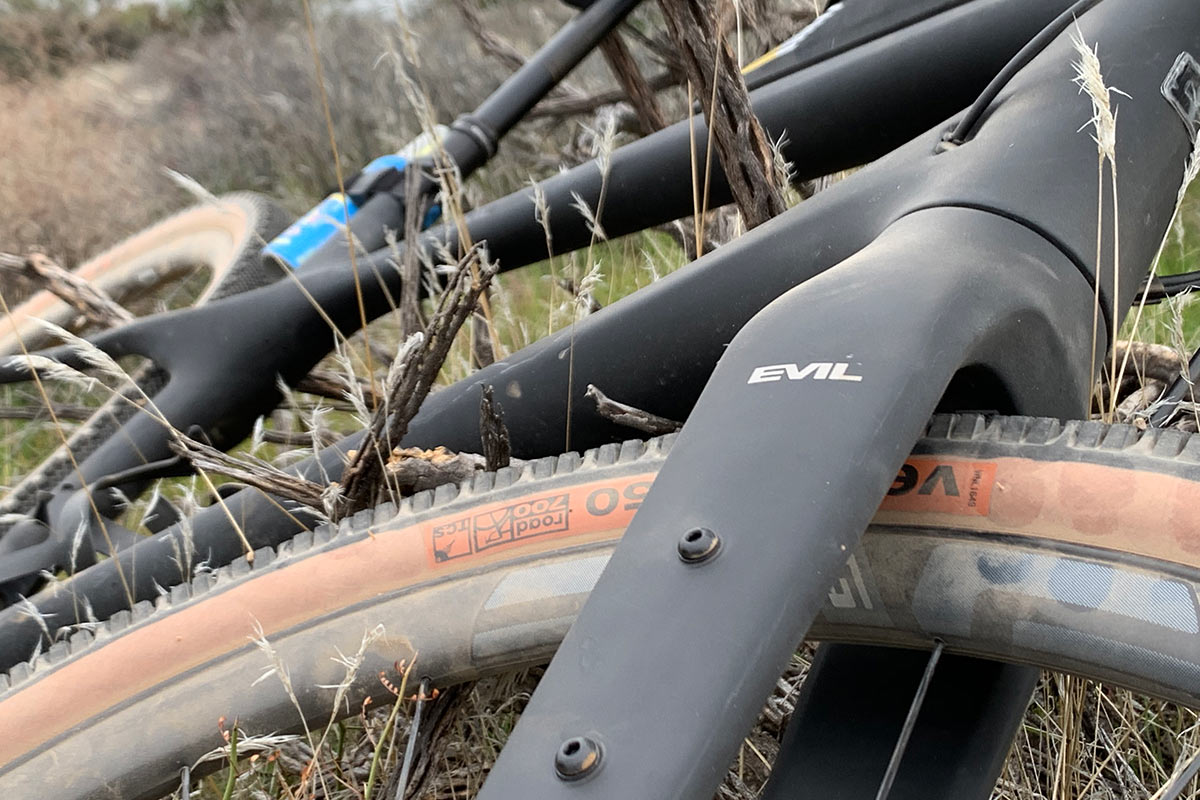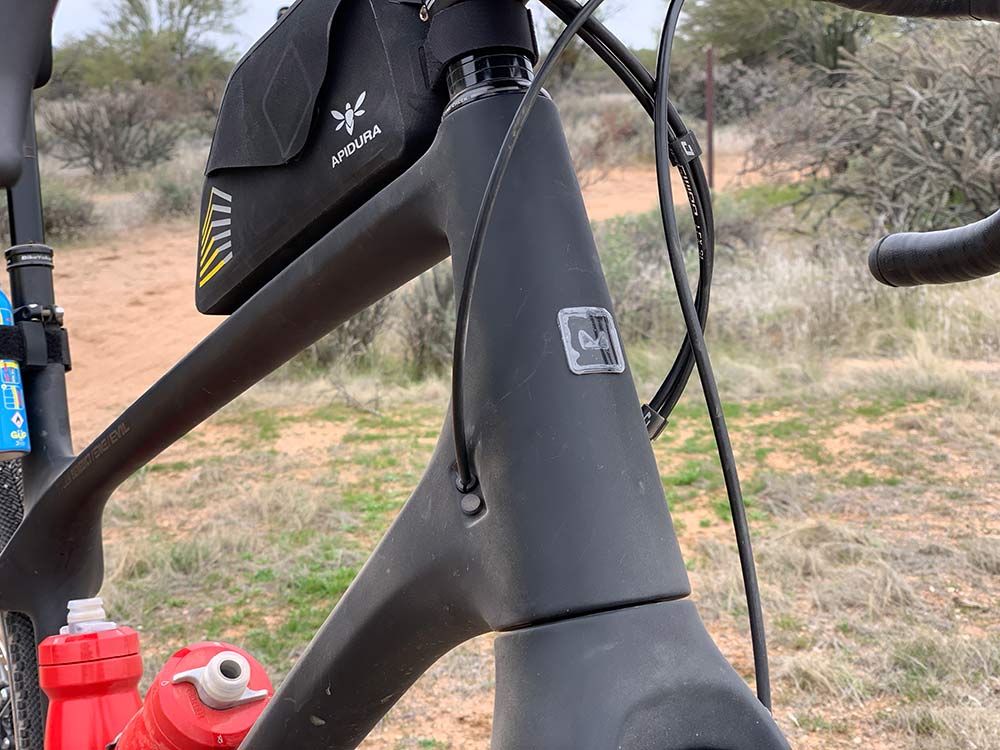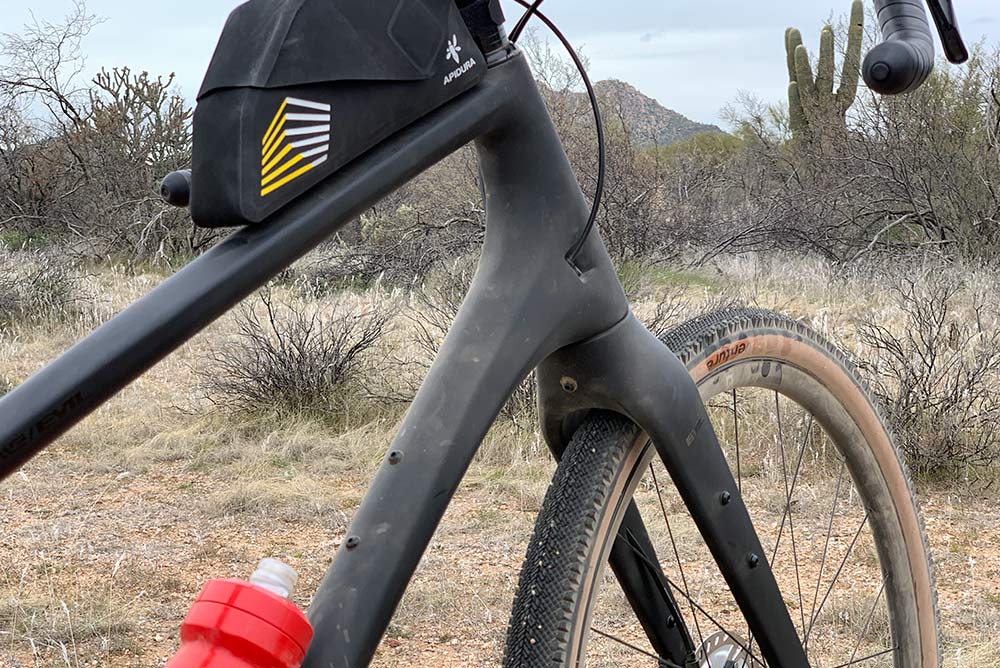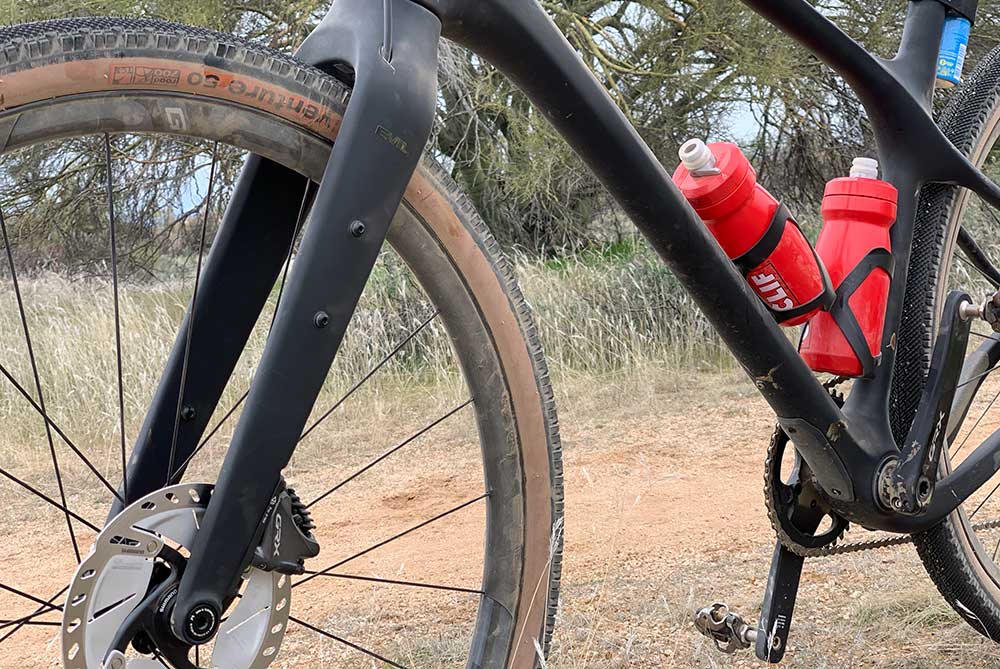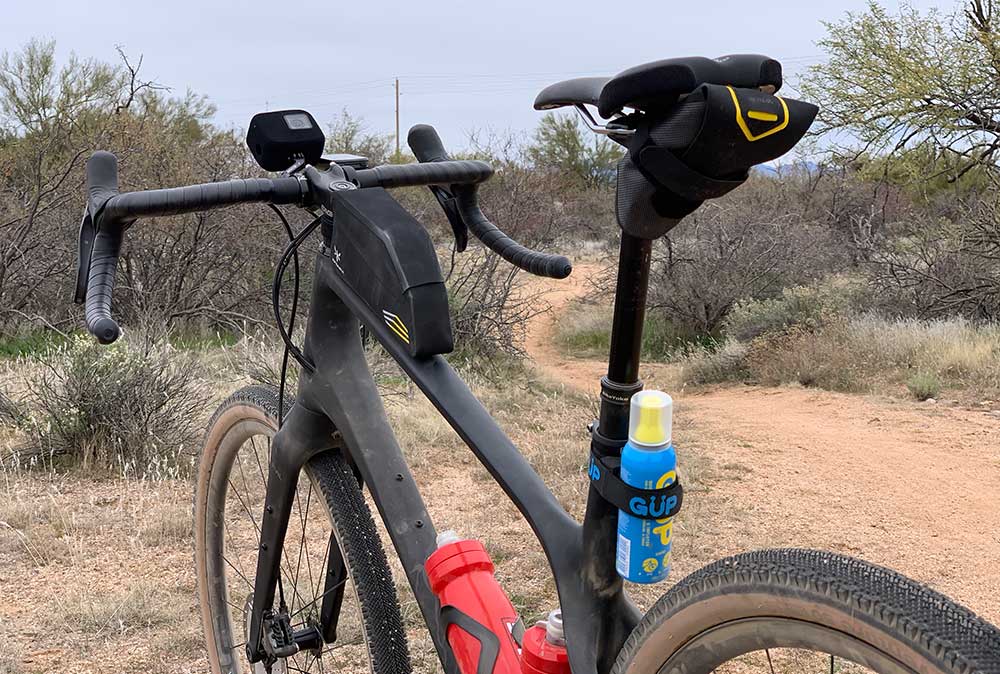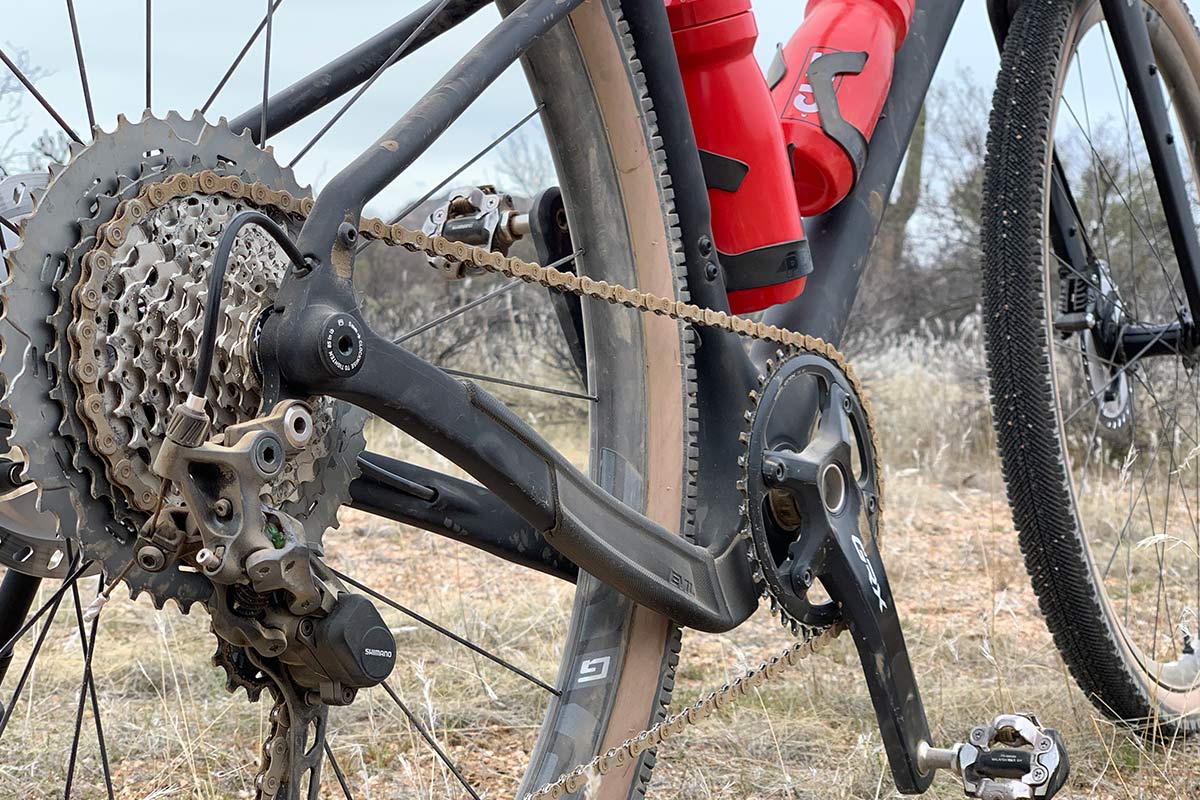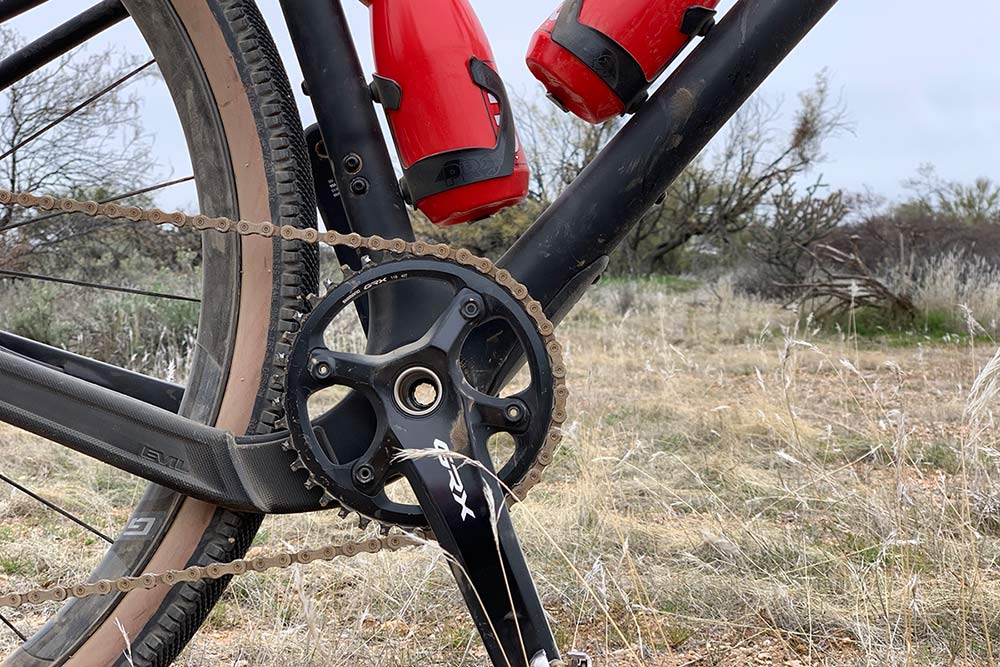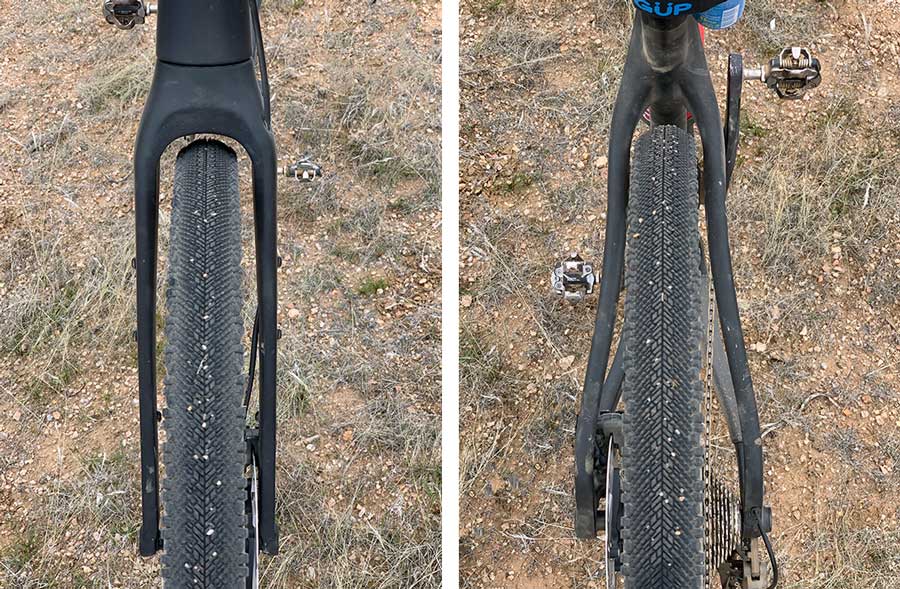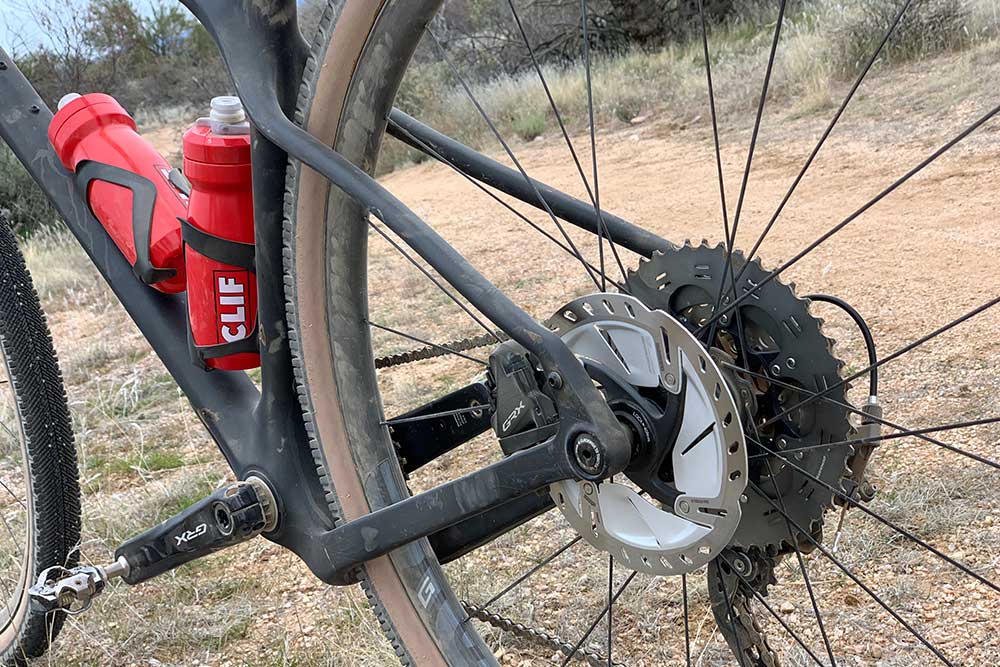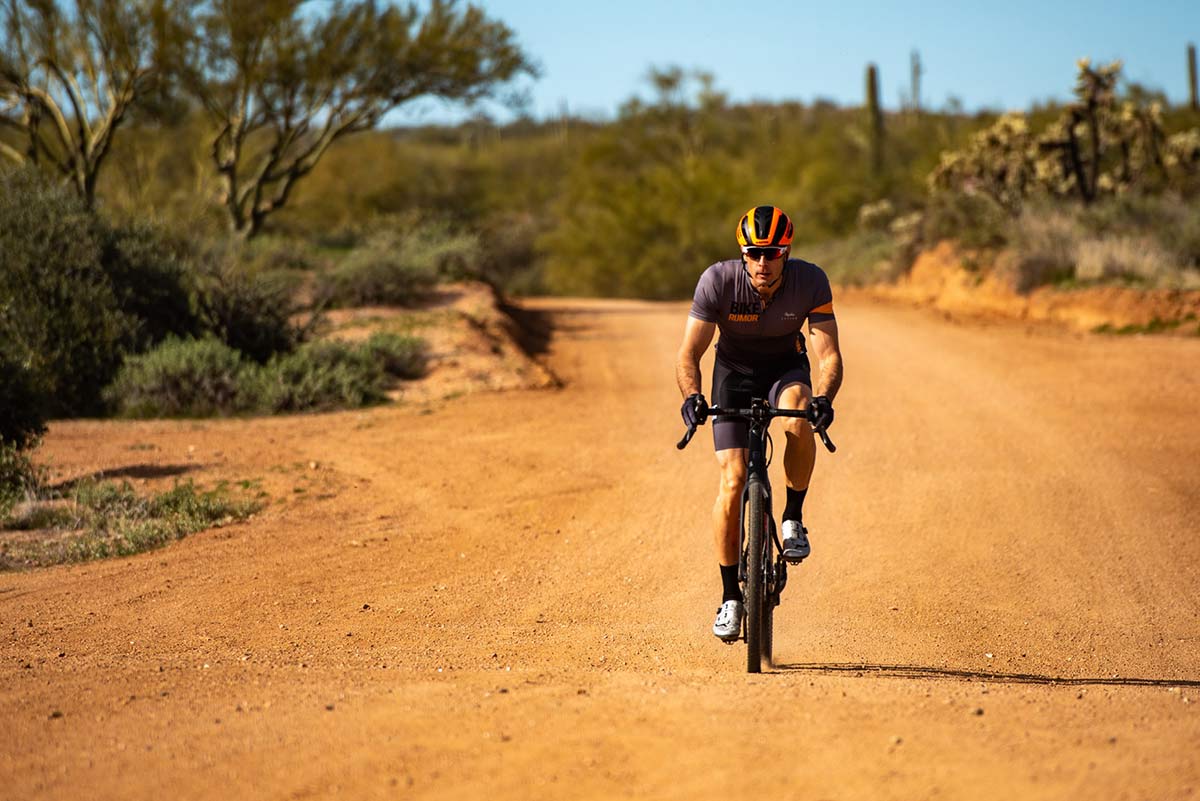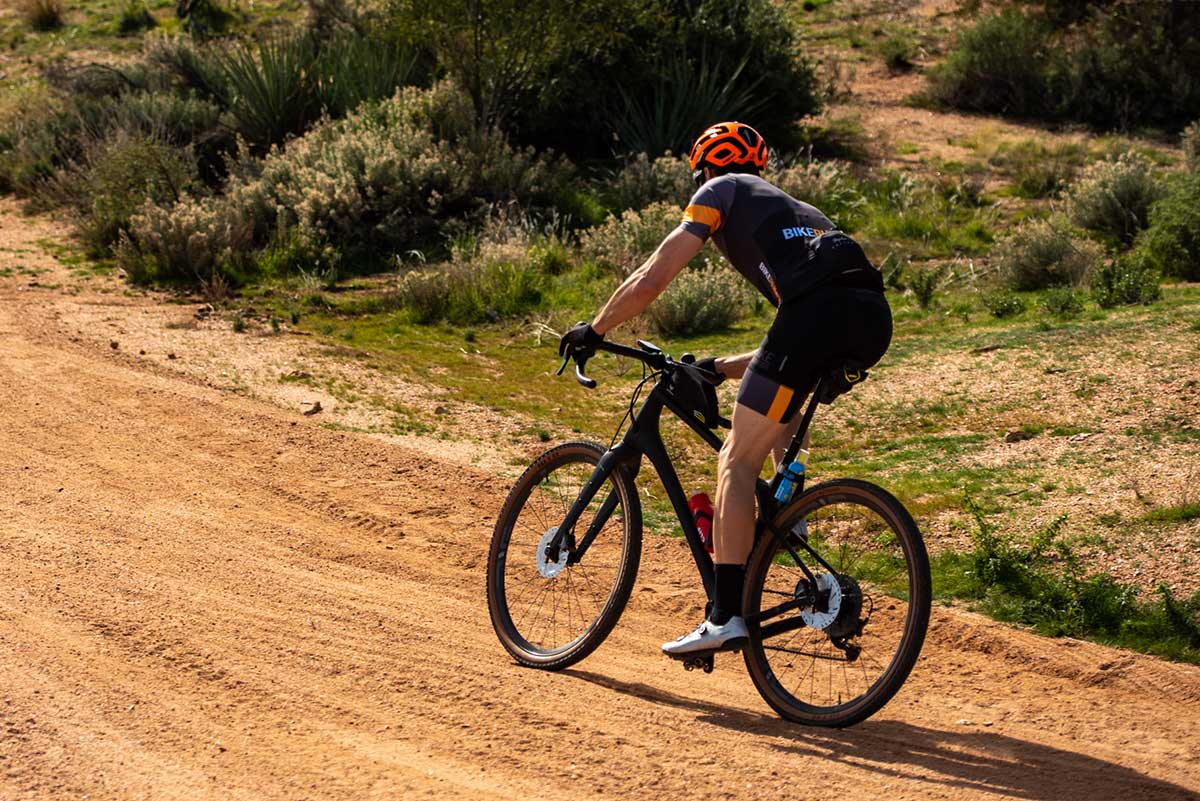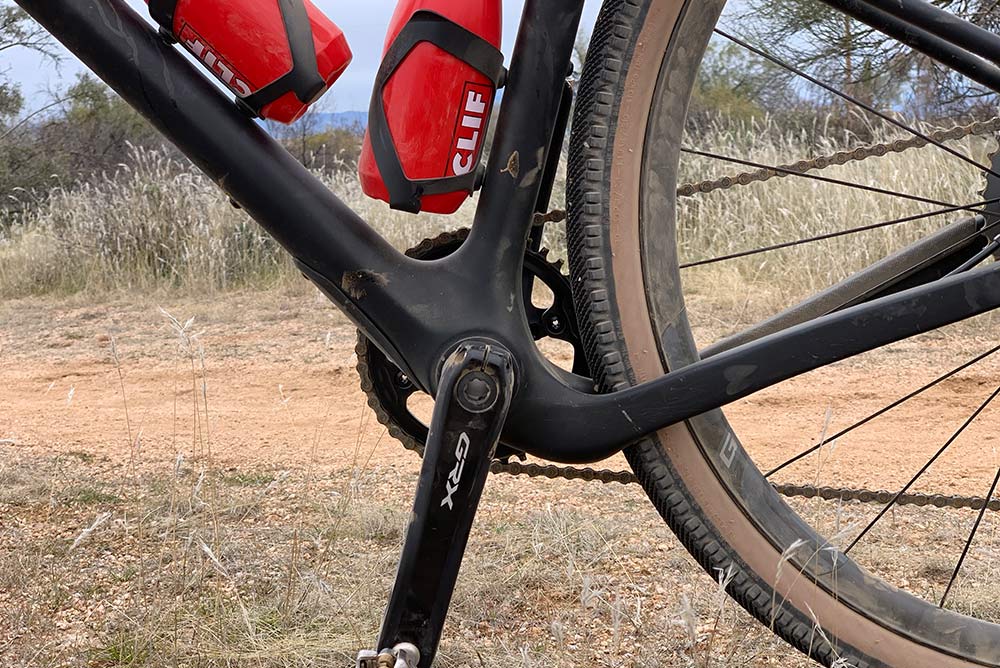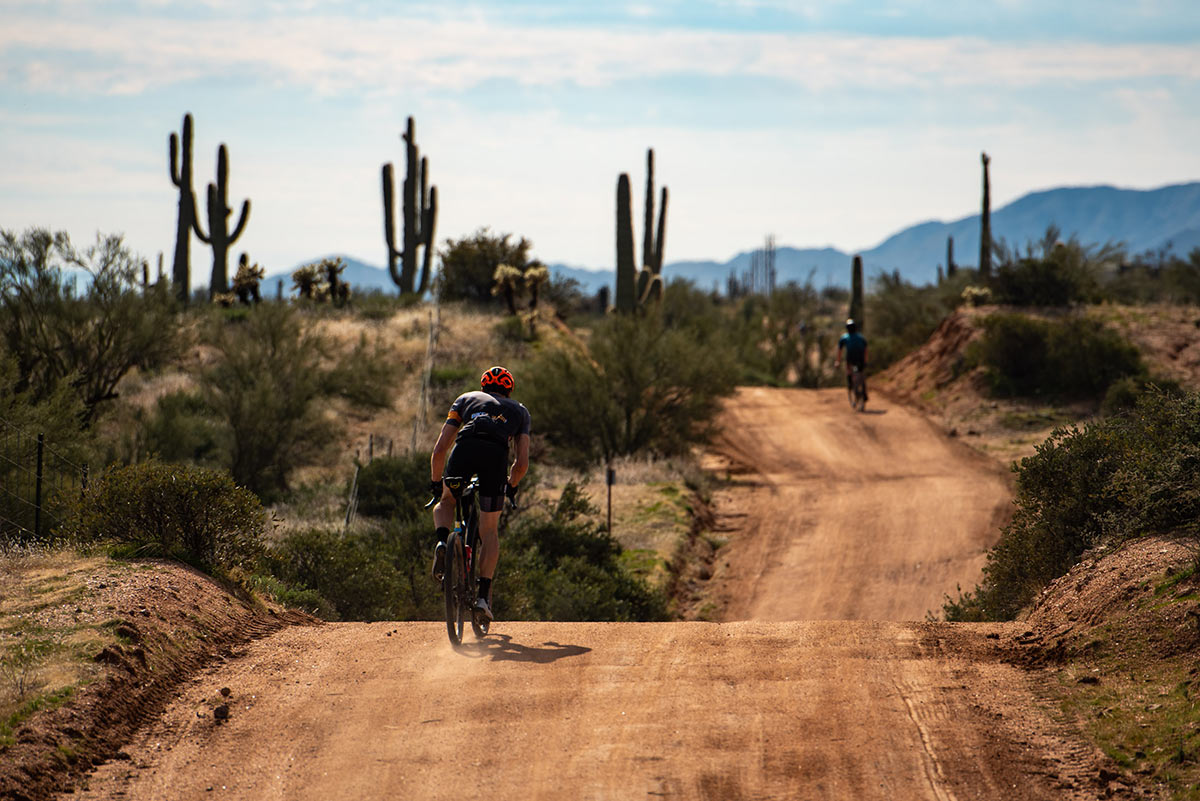Are you ready to rock?!? Because the new Evil Chamois Hagar gravel bike is. Not just the dirt roads, but your sense of what a “gravel bike” should be. What it could be. And after riding it, why a standard off-road drop bar bike might leave you wanting. Or not.
Evil provided their new bikes for us at Blubird’s Gravel Camp, an annual retreat for folks to ride, test, and talk about the sport, the people, and (naturally) the products. We’ll have plenty more to share on this soon, but the tech highlight of the trip was this bike. Love the looks or hate them, it absolutely changed our minds about what a “gravel” bike can be…
Evil Chamois Hagar tech details
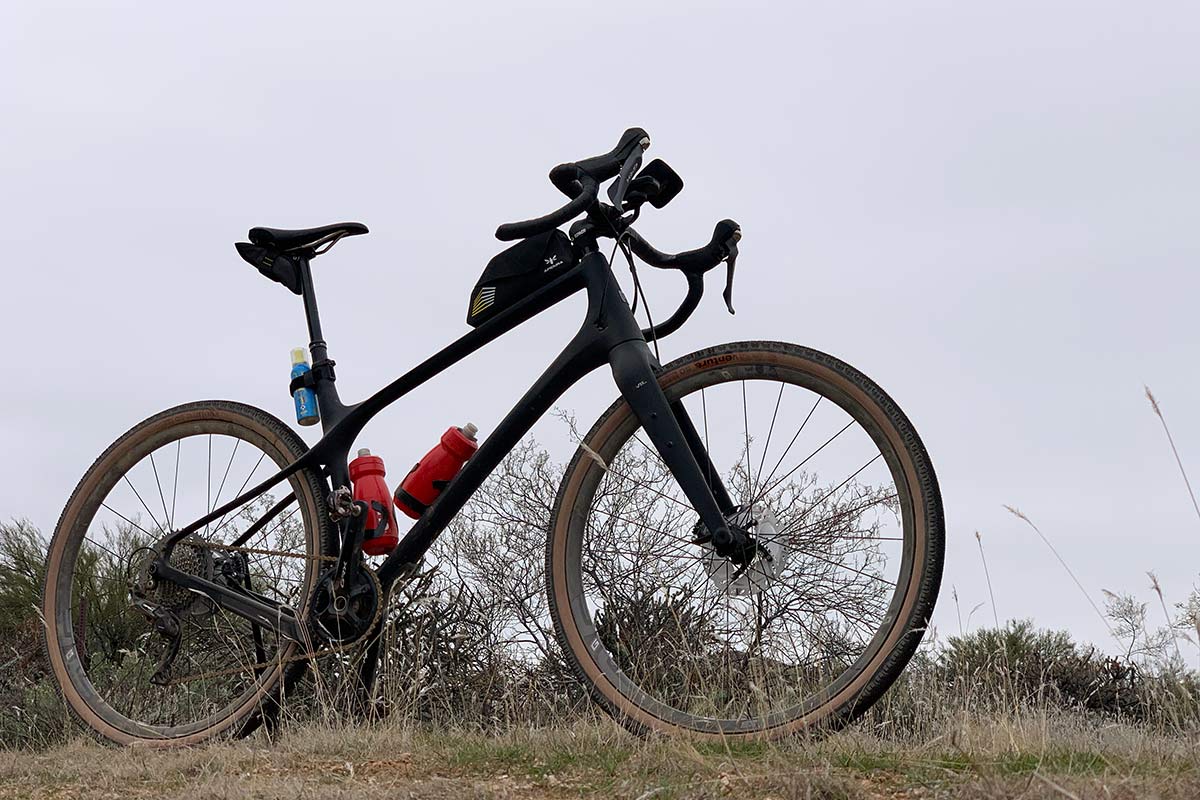
We have the complete specs, tech info and geometry chart in our original launch coverage. Here, a few highlights and actual photos of all the key points. And we’ll dive deep on that frame design.
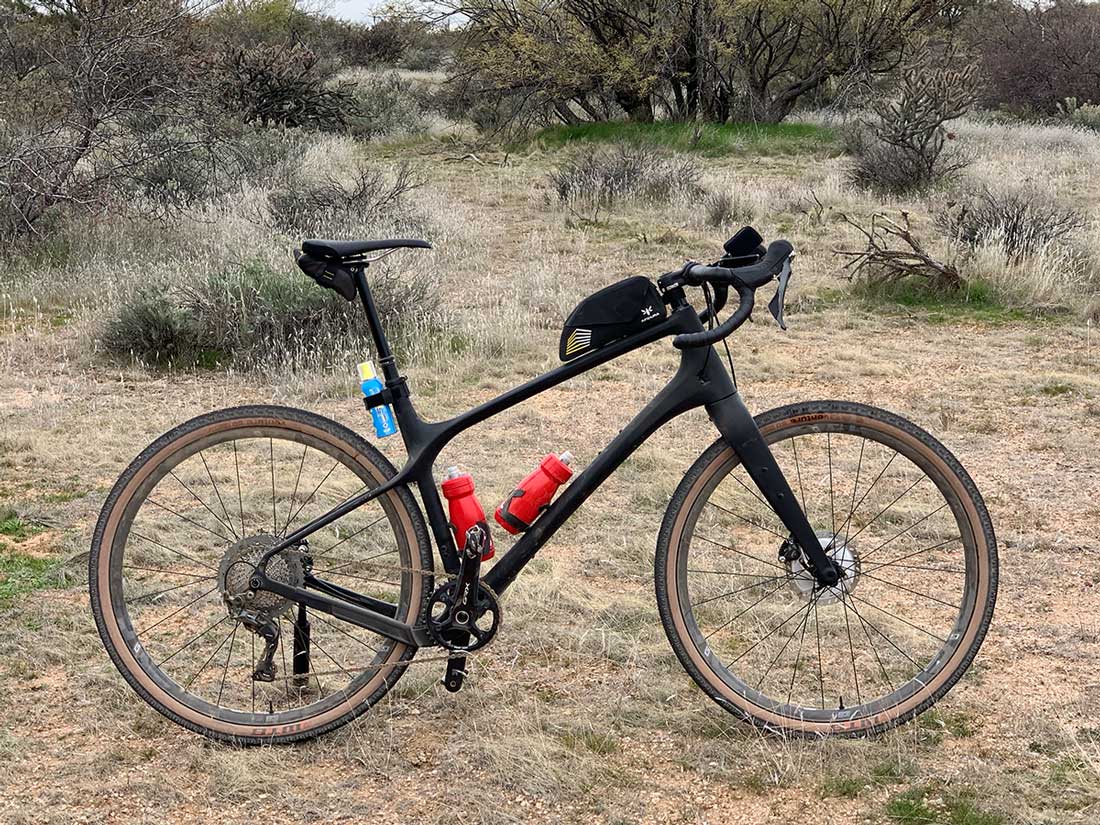
The most striking thing about the Chamois Hagar is the looks, but it follows the design ethos (literally and figuratively) of their Following 120mm mountain bike.
In fact, it’s based very closely on The Following’s geometry, with a few tweaks made to help it work without suspension.
Basically, they wanted to start with a mountain bike and come down to a gravel bike. Much the same way they start with a DH bike and come down to enduro, trail and XC bikes. In other words, keep the fun element of a bigger travel, more capable bike, but adjust it for the use case.
So, compared to a regular gravel bike, which they say is typically designed as an upscaled road bike, Evil’s design philosophy goes in the other direction. They put the rider a little lower and a little further back. The saddle position sits on the very edge of UCI legality for road bikes. This wasn’t done because they expect anyone to race this in UCI events. Rather, it’s because it keeps it within the range of good pedaling positions, letting you lay down the power.
A slacker 66.67° head angle and shorter offset give it more trail, which means more stability. It’s definitely their own fork, and no, you can’t put a suspension fork on it. It’s not tall enough, you’d throw the geometry all off. It has 93mm of mechanical trail, which is a lot. The result is a massively stable bike…in most conditions.
How does that compare? Traditional gravel bikes get head angles between 70-72º, and trail figures from 56mm to 64mm.
The other big difference is the BB drop, which measures 80mm. That’s 5-10mm lower than a typical gravel bike. That, combined with the ultra low top tube and dropped stays give it that weird, low slung look that makes even this size XL I tested look more like a kid’s bike. There’s a good reason for keeping everything so low, keep reading…
But those are, indeed, full size 700×50 tires on there! That’s the max recommended size, and honestly, if you need more than that, it’s probably time to switch to your mountain bike. Surprisingly, it doesn’t look anemic if you switch to a 38mm or 40mm tire, though.
The bike is setup with fender and rack mounts, too. If you’re looking for a stable, comfortable bike for light touring, this one may surprise you. There are mounts on the fork legs and crown, under the BB, plus three bottle cage mounts inside the front triangle, and Bento box mounts on the top tube. I used the Apidura bag there to keep snacks and a GoPro handy.
Evil Chamois Hagar ride review
The second thing you notice about Evil’s gravel bike (after the looks) is the stability. In that, when you first hop on it and are wiggling around slowly, how little it has at 2mph. Don’t try to sneak between cars in a parking lot on this one!
But as soon as you’re moving for real, it’s planted. As in, this is one of the most stable and predictable bikes I’ve ridden. Perhaps the most telling example is when it hits the soft sand sections. Whether dipping between dry river beds or hitting those inevitable soft patches on farm roads, deep soft sand sections are just part of gravel riding. And they suck.
But the Chamois Hagar sails through them. Yes, 50mm tires offer crazy good floatation, but that was only part of it. The bike held an incredibly stable line. As in, I could actually keep riding straight and didn’t lose momentum (and, thus, waste a lot of energy). This was, for me, the most standout feature on a bike that pretty much did everything really, really well. If you ride in soft, sandy conditions, check this one out.
This bike was designed to crush rough courses like the Grinduro. That’s why they spec’d a 185mm (!!) dropper post. Because the lower and farther back you can get, the faster and safer you can descend gnarly, loose, chunky sections. So they designed the bike to help you get low. And to encourage you to get into the drops on faster descents so you have more control and a better hand position. Hence the extremely low slung shape, dropped BB and ridiculously long travel dropper seatpost.
The ENVE G-Series gravel handlebar was a great fit for this. The tops come to a sharp L-bend at the corners, offering a big hand rest patch, and the 120mm drop does put you pretty low when you use them. Brake levers remained in easy reach in either position.
The low BB didn’t present any pedal-strike issues, but there was very little for it to strike upon. The trails and roads we used were gloriously fast and smooth. That slightly rocky descent in the video? That was the most technical terrain I encountered over two days and 90+ miles of riding. Your results may vary.
I was initially concerned that the front end was too far forward, that I’d have a hard time weighting the front tire enough to maintain traction. And the dry kitty-litter surface certainly challenged us. But it turned out to be a non-issue. Again, 50mm tires have a lot of grip, but the geometry just worked. I could imagine ripping this thing pretty hard on hero dirt. Er, sorry, hero gravel.
So, is it really just a mountain bike?
No. It’s a really aggressive gravel bike. You can’t put a suspension fork on it. In fact, doing so would kinda make it too slack. And it’s not designed for flat bars. It’s designed around 700×50 tires, which isn’t quite big enough for proper mountain biking. It basically comes the way they meant it to be ridden. So much so that we get the impression that making changes would adversely affect the handling.
Would I want it in my permanent fleet? Yeah, definitely. While I’d probably still choose a “traditional” gravel bike for some rides, particularly ones primarily ridden on actual road, the Chamois Hagar was, quite literally, the perfect bike for the flowing singletrack in Scottsdale, AZ. And there’s at least two local (to me) trails where it would shine. It could totally work as my only gravel bike, too, if I had to limit myself. If you get the chance to ride one, check your preconceptions at the door and get ready to have a blast. Mountain bikers will get it instantly. Roadies? Well, you’ll figure it out eventually.
